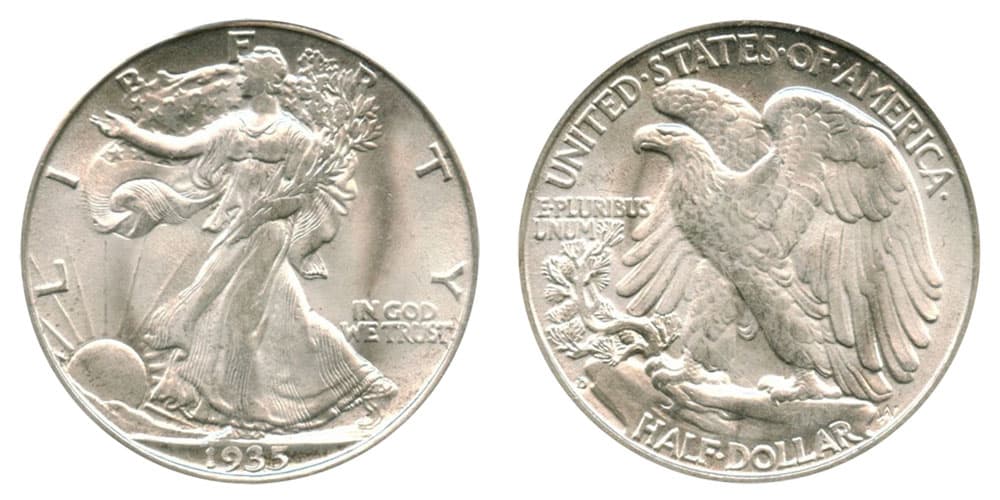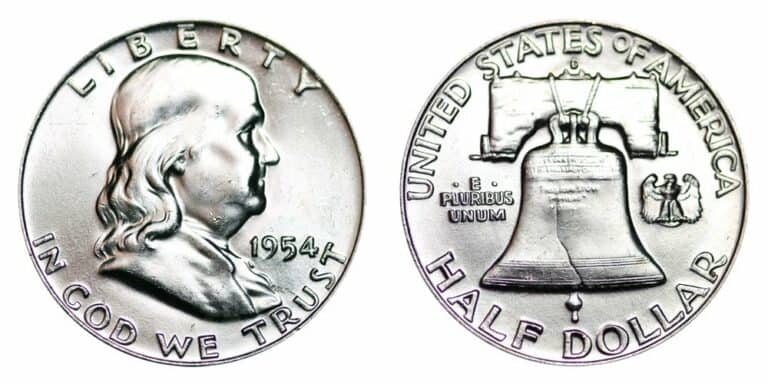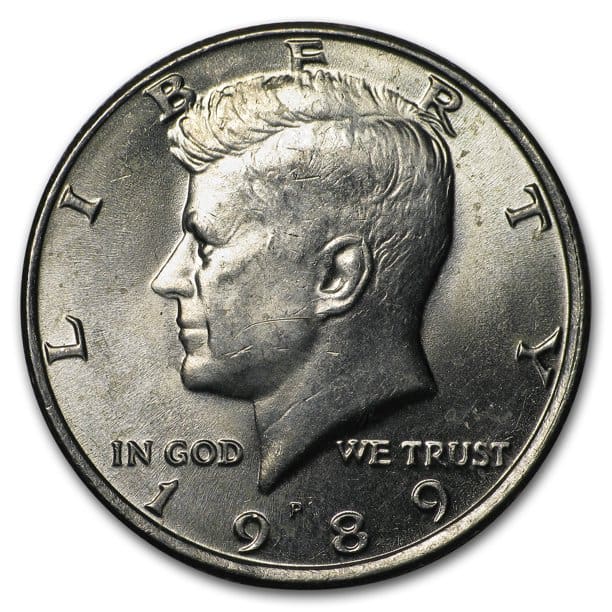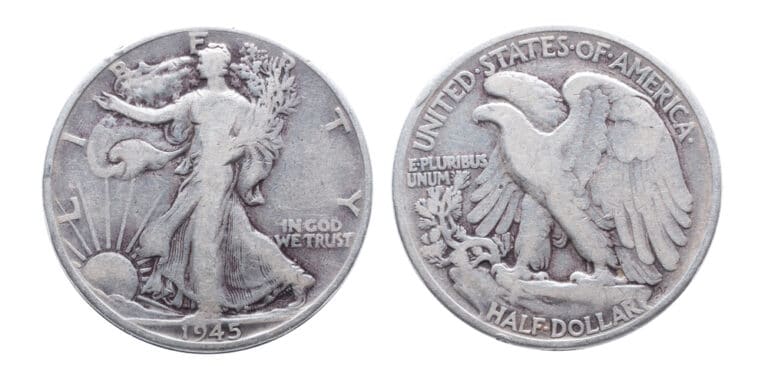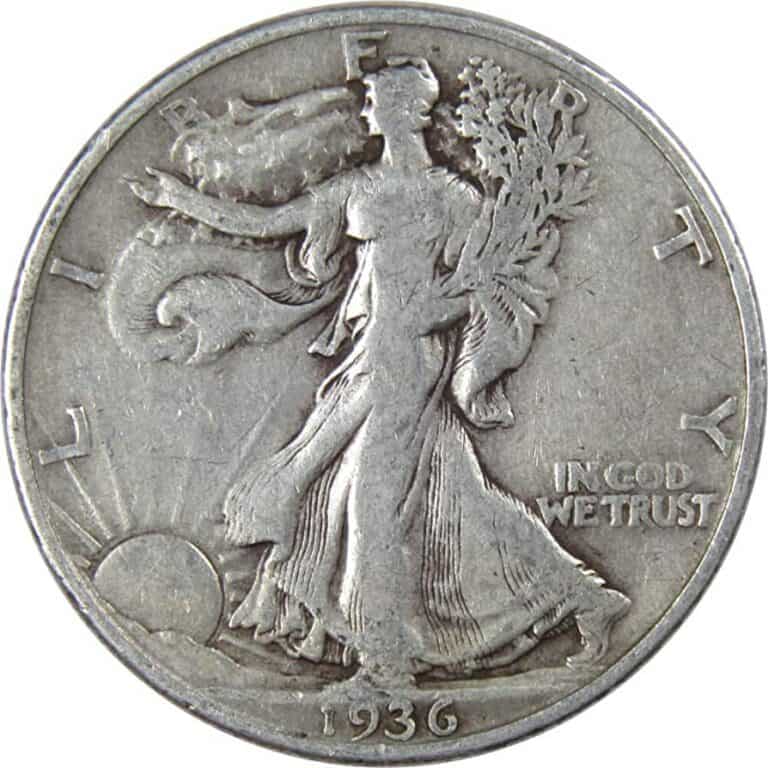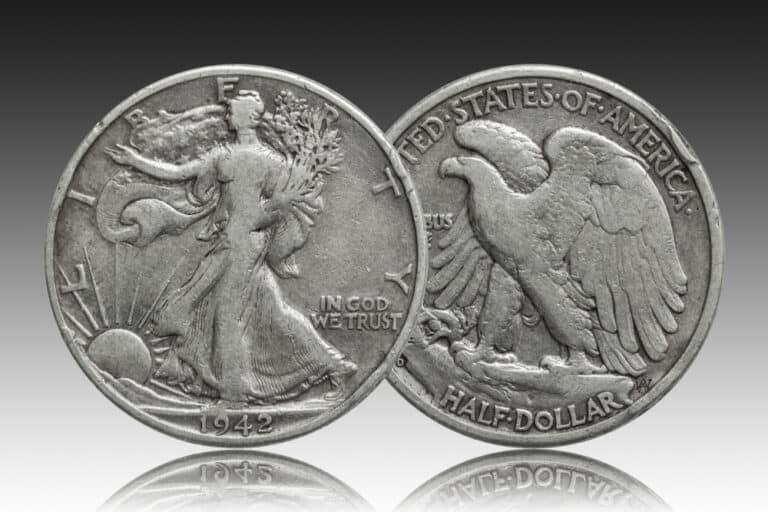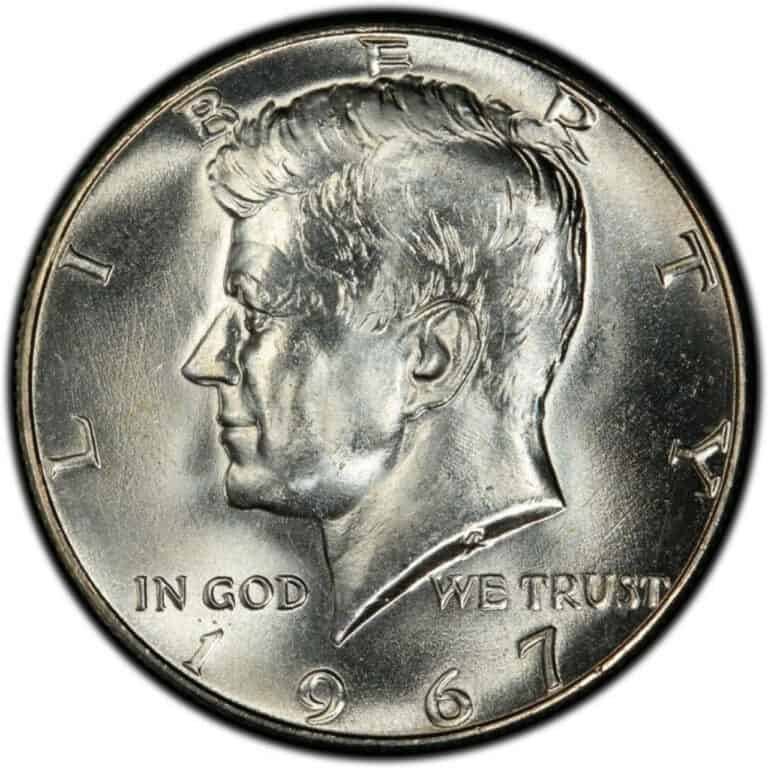1935 Half Dollar Value: How Much Is It Worth Today?

Do you love adding rare and valuable coins to your collection set? You might want to consider the 1935 half dollar, an iconic and highly sought-after piece produced by the US Mint.
This half-dollar played an integral part in American businesses and quickly became a favorite among coin collectors and investors because of its high-quality and striking design.
Even though the 1935 half-dollar is no longer produced, it remains a popular collector item, thanks to its composition and sentimental value.
While low-quality specimens might only be worth their melt value, pristine examples, and rare varieties can fetch hundreds or even thousands of dollars on the market.
In this comprehensive article, we will dive into the varieties and errors to watch out for when assessing the value of a 1935 half-dollar. Stick around!
1935 Half Dollar Value Chart |
||||
| Mint Mark | Good | Fine | Extremely Fine | Uncirculated (MS 65) |
| 1935 “No Mint Mark” Half Dollar Value | $13 | $14.50 | $19.50 | $235 |
| 1935 “D” Half Dollar Value | $13 | $20 | $45 | $1375 |
| 1935 “S” Half Dollar Value | $13 | $20 | $60 | $1900 |
1935 No Mint Mark Half Dollar Value
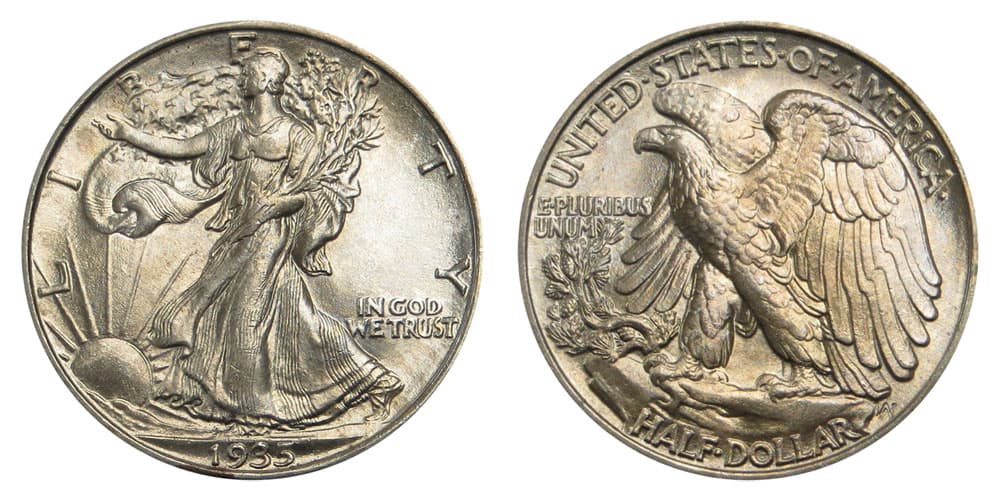
In a quest to replace Baber coinage (minted in 1892), the director of the US Mint in 1915, Robert W. Woolley, requested the Commission of Fine Arts to hold a competition.
The commission selected engravers Adolph Weinman, Albin Polasek, and Hermon MacNeil to submit designs for the new coins. Five of the sketches submitted by Weinman got approved, including the obverse and reverse of the half dollar.
According to art expert Cornelius Vermeule, Weinman’s design for the half-dollar is the most attractive design in American coinage history. On the obverse, the half dollars depict an image of Lady Liberty walking towards the sun while holding oak and laurel branches to symbolize civil and military glory.
The obverse features several inscriptions, including LIBERTY, which arcs around the coin. The engraving IN GOD WE TRUST falls on the right side of Lady Liberty, whereas the production date lies at the very bottom, just below her feet.
On the reverse, the designer included a bald eagle perched high on a mountain crag with its wing spread. A mountain pine grows from a crack in the rock on the right side, symbolizing strength. Above it lies the Latin motto E PLURIBUS UNUM, and the denomination HALF DOLLAR falls below the mountain.
In 1916, production of the new half-dollar began, and the denomination entered circulation. Due to its stunning design, the Walking Liberty half-dollar quickly gained public attention. Because of increased demand, the three minting centers–Philadelphia, Denver, and San Francisco–worked overtime to increase production.
Despite the great artistic value of Weinman’s design, the mint struggled to bring it fully, no matter how many times they tried to modify it. Finally, in 1948, the Franklin half dollar replaced the Walking Liberty coins to honor the Founding Father of America, Benjamin Franklin.
The Philadelphia mint struck 9,162,000 Walking Liberty half dollars in 1935. A high demand for half dollars and a slow recovering economy prompted the high mintage.
The 1935 “no mint mark” half a dollar is readily available in average condition and can cost anywhere from $13 to $50. However, 1935 coins are rare in mint state condition, unlike their 1936, 1937, and 1939 counterparts. For example, gems in MS67 can fetch as much as 12,337.50.
Typically, a high-quality 1935–no mint mark half dollar comes with a frosty luster. However, its strike quality is slightly weaker than the 1934 and 1936 half dollars. That’s why the coin is rare in high grades – MS67 and above.
1935 D Half Dollar Value
The mint in Denver recorded the lowest mintage of Walking Liberty half dollars. It produced 3,003,800 units with the “D” mint mark.
Interestingly, during the first two years after the launch of Walking Liberty half dollars, the mint mark appeared on the obverse side, just below the motto “IN GOD WE TRUST”. But in 1917, the mint moved it to the reverse side.
Most 1935–D half dollars have weak strikes, especially on high points, like Lady Liberty’s hand. In fine or extremely fine conditions, these pieces cost between $13 and $50. However, uncirculated d-marked specimens can carry a high premium in Auctions. For example, a coin graded at MS67 sold for $23,500 at Heritage Auctions in 2016.
1935 S Half Dollar Value
Lastly, the San Francisco minting center struck 3,854,000 half dollars. Although this mint had a higher mintage than the Denver mint, its coins are super rare. This is because there were few collectors in the region in 1935, meaning most half dollars entered circulation. As a result, only a limited number of gems exist.
With a weight of 12.5g, a 1935–S half-dollar in good condition sells for $13. In extremely fine condition, its price increases to around $60. But mint state coins start selling from $275 (MS60) says NGC.
Some pieces, especially in grade MS65 and above, can cost between $1900 and $19,500. The most expensive 1935-S sold for S41,125 in 2013 at Heritage Auctions.
1935 Half Dollar Grading
Most grading services like NGC and PCGS use Sheldon’s scale method to help coins collectors describe their specimens accurately and determine the potential value of their coins. This grading technique involves assigning coins numerical values based on their appearance and condition.
Now, let’s look at the various grading categories for the 1935 half-dollar.
Good (G-4)
A 1935 half-dollar in good condition shows signs of heavy wear and damage. Although the engravings, lettering, and date might be readable, some might have some faintness in specific areas.
Nevertheless, the outline of the main design elements remains visible. For instance, Lady Liberty might be reduced to an outline of her original self. As for the rim, it might appear incomplete and isolated from the field.
Fine (-12)
A fine 1935 half-dollar displays sharper details than pieces in good condition. On the obverse, Liberty’s skirt appears sharper, but you might notice damage near her right and left leg, breast, and right arm. The high areas from her head to her sandal are nearly flat.
The coin’s reverse has a smooth surface near the eagle’s breast and leg. Also, the layers of feathers are moderately worn. On both sides, you can see the entire rim but separated from the field.
Extremely Fine (EF -40)
Walking Liberty half dollars in extra or extremely fine condition exhibits minor wear on Lady Liberty’s head, breast, arm, and leg. Nearly all lines on her gown are recognizable except the areas near her left leg.
Almost all lines are visible, but sections with rounded areas like the sun and its rays display signs of wear. On the reverse, the layers of feathers in the eagle’s wings appear complete. Collectors might also notice traces of mint luster in protected sections of the coin.
About Uncirculated (AU – 55)
A 1935 half-dollar graded as AU-55 shows little evidence of wear on the Obverse. You might notice some contact and scratch marks, particularly near the eagle’s upper breast and left leg. Nonetheless, these coins maintain their mint luster and have a great eye appeal.
Mint State -65 (MS-65)
Mint state coins have never entered circulation. As a result, they show little sign of contact marks and nicks on the obverse and reverse. They also have a striking appearance, thanks to their sharp strikes and exceptional eye appeal.
Perfect Mint State- 70 (MS-70)
Collectors consider half dollars graded as MS70 as true gold mines. These coins are perfect since they show no signs of wear or damage on their surface. They maintain their original mint luster and have a crisp strike. All their design elements are recognizable, even in major focal areas. Their overall eye appeal is also superb.
Rare 1935 Half-Dollar Error List
While the Walking Liberty half-dollar has the most striking motifs ever used on a circulation currency, some dates didn’t strike well. However, the US Mint did a great job with the 1935 half-dollar, producing very few error varieties.
Here are some rare errors in 1935 half dollars that might catch the attention of collectors:
1935 Half Dollar Rotated Die Error
The rotated die error occurs when the planchet gets struck with misaligned dies. As a result, the half-dollar design on the obverse and reverse appear shifted from their normal position.
Usually, the severity of the rotation varies from one coin to another. For instance, a 1935 half-dollar with a 180-degree rotation will have its design rotated upside down relative to the coin’s edge. Conversely, a coin with 90 degrees rotation will not flip to a perfectly oriented design.
In average conditions, coins with rotated die errors can sell for around $15 to $20. But their value can increase significantly in higher grades.
1935 Half Dollar Double Die Error
Another minting error you should look for in 1935 half dollars is the double die error. It occurs when a coin gets struck with a die engraved with doubled design elements, resulting in double or ghost-like features. Alternatively, the error can happen when a coin is struck twice by the same die.
In 1935 half dollars, especially those with the “D” mint mark, the double die error appears on the lettering, date, and some design elements like edges of the eagle’s features.
The double die error stands out more in some 1935 half dollars than others, and this can affect their value. But remember, the coin’s value also depends on factors like condition and rarity.
1935 Half-Dollar Clipped Planchet Error

Besides double dies, some 1935 half dollars come with clipped planchet errors. This error occurs during minting when the blank planchet strip is not properly fed into the cutting machine.
When this happens, the machine might clip off a section of the coin along the edge, resulting in pieces with a straight or curved edge. The severity of the clipped area will determine the value of the coin.
1935 Half Dollar Lamination Error
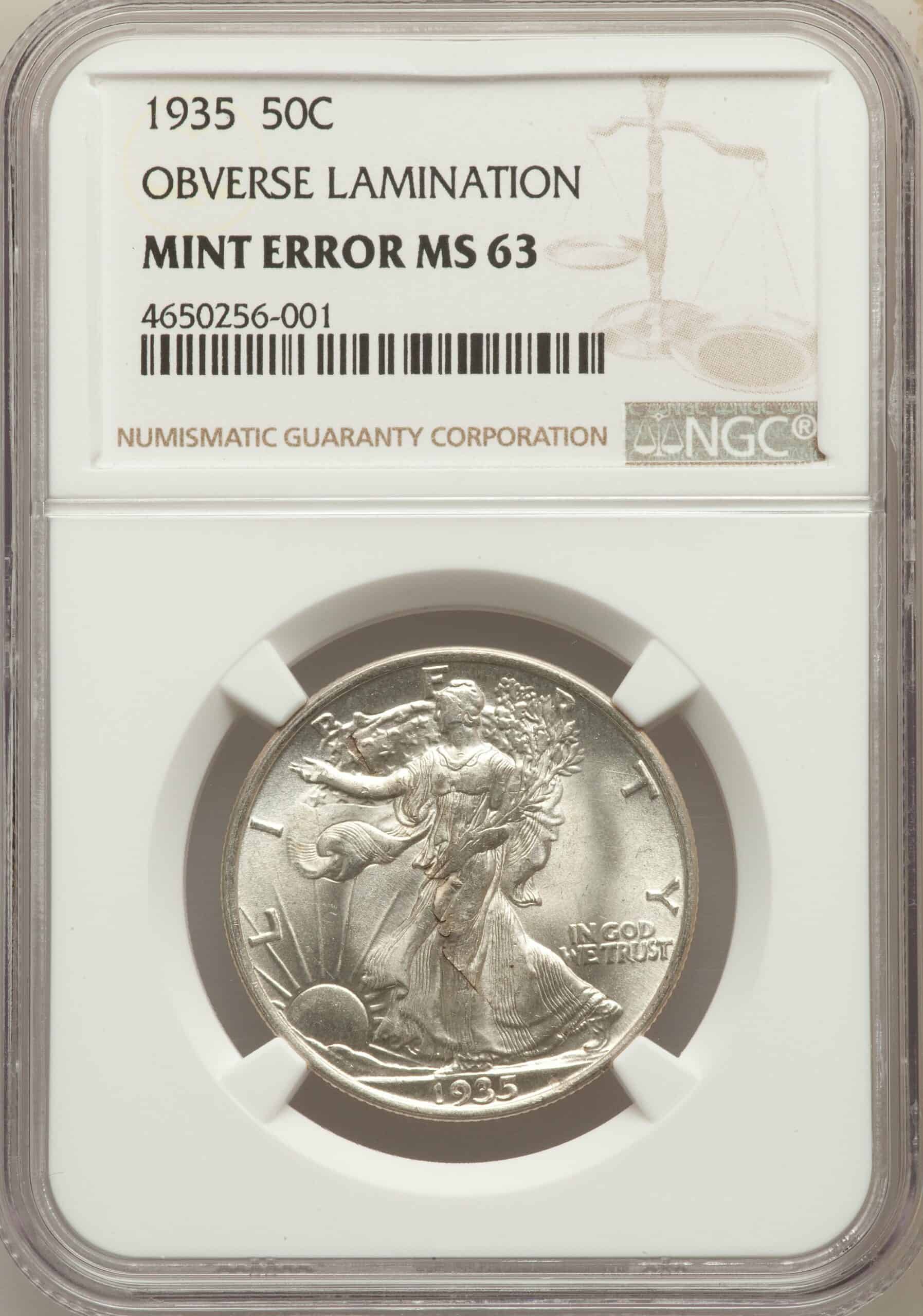
Lamination errors cause a piece of the coin’s metal surface to flake, crack, or peel away, resulting in a thin metal layer that seems to be laminated. Experts believe the error is caused by foreign material embedded in the planchet, which causes the metal alloy to separate along the horizontal plane.
Like double die errors, lamination errors can affect small or large sections of the coin’s design elements, including lettering, lady Liberty image, and date.
1935 Half Dollar FAQs
Is 1935 Half Dollar Silver?
Yes! The 1935 Walking Liberty Half Dollar has a metal composition of 90% silver and 10% copper. It weighs 11.25 grams (0.3617 troy ounces) in terms of .999 pure silver. The half-dollar maintained this composition for almost 50 years before the Coinage Act of 1965, which forced the mint to drop silver content to 40%. To eliminate silver from circulating US currency, the mint adopted the 75% copper and 25% nickel composition used up to date.
What’s the value of the 1935 half-dollar on the current coin market?
In average condition, a 1935 half-dollar costs anywhere from $12.50 to $50, regardless of its minting location. Low-quality pieces are worth their weight in silver, which changes constantly. However, high-quality specimens, professionally graded by a reputable grading company like PGCS, can cost between $235 and $2000. That said, below we’ve provided you with a list of the most expensive 1935 half dollars:
- 1935 MS67 regular strike half dollar sold for $12,338 in 2021 at Legend Rare Coin Auctions
- 1935-D MS67 regular strike half dollar sold for $23,500 in 2015 at Heritage Auctions
- 1935-S MS67 regular strike half dollar sold for $41,125 in 2013 at Heritage Auctions
What are the mint marks on the 1935 half-dollar?
In 1916 and early 1917, the mint mark was located on the obverse of the Walking Liberty half dollar. But midway through 1917, the mint moved the mint mark to the reverse side, near the edge, just below the mountain pine growing from a crack in the rock. The half-dollar maintained the same mint mark position until 1948 when the Franklin half-dollar replaced it.
